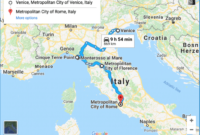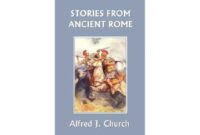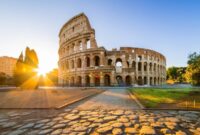As we delve into the enigmatic realm of life in ancient Rome, we embark on an extraordinary journey through time, uncovering the intricate tapestry of a civilization that shaped the very foundations of Western culture. From its towering monuments to its vibrant social structure, ancient Rome stands as a testament to human ingenuity and the enduring power of history.
Our exploration will traverse the social hierarchy, family life, education, religion, entertainment, politics, economy, art, architecture, and the profound legacy that ancient Rome has left upon our world.
Introduction
Life in ancient Rome encompasses the everyday experiences, social structures, cultural practices, and historical events that shaped Roman society from its humble beginnings as a small village on the Tiber River to its rise as a global empire and eventual decline.
The grandeur of life in ancient Rome extended beyond its architecture and military prowess. The Romans were also renowned for their artistic achievements, particularly in the realm of sculpture. From the iconic statues of Augustus to the intricate reliefs adorning temples and public spaces, famous sculptures served as both decorative elements and testaments to the Romans’ exceptional craftsmanship.
They not only immortalized individuals and events but also provided a glimpse into the social, political, and religious aspects of Roman society.
Studying life in ancient Rome provides valuable insights into the development of Western civilization, the complexities of human nature, and the enduring legacy of one of history’s most influential societies.
Social Structure
Ancient Roman society was highly stratified, with a rigid hierarchy that dictated the rights, privileges, and responsibilities of its citizens.
At the apex of the social pyramid were the patricians, a small but powerful elite who held most of the wealth and political power. Below them were the plebeians, who made up the majority of the population and included farmers, artisans, merchants, and laborers.
Patricians
- Descendants of the original founders of Rome
- Held exclusive political and religious privileges
- Owned vast estates and controlled most of the wealth
- Served in the highest offices of government and the military
Plebeians
- Common people who made up the majority of the population
- Included farmers, artisans, merchants, and laborers
- Had limited political rights and could not hold high office
- Were subject to military conscription and taxation
Slaves
At the bottom of the social hierarchy were slaves, who had no rights and were considered property. They were often used as laborers, servants, or gladiators.
Family Life
Family was the cornerstone of ancient Roman society. It was the basic unit of social, economic, and political life. The Roman family was a patriarchal institution, with the father holding absolute authority over his wife, children, and slaves.
The typical Roman family consisted of a husband, wife, and children. The husband was the head of the household and was responsible for providing for his family. The wife was responsible for managing the household and raising the children. Children were expected to obey their parents and to contribute to the family’s well-being.
The Importance of Family
Family was important in ancient Rome for a number of reasons. First, it provided a sense of stability and security in a world that was often chaotic and unpredictable. Second, it was a source of economic support. Third, it was a way to pass on cultural values and traditions from one generation to the next.
Education
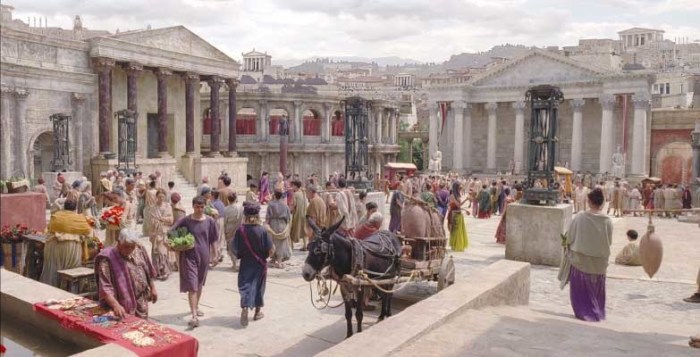
Education in ancient Rome was highly valued, especially for boys. The educational system was divided into three stages: elementary, secondary, and higher education.
Elementary education began at the age of seven and lasted for five years. Boys were taught reading, writing, arithmetic, and basic Latin grammar. Secondary education was for boys aged 12 to 16 and included more advanced studies in Latin, Greek, mathematics, and rhetoric.
Higher Education
Higher education was available to a select few who could afford to pay for it. There were two main types of higher education institutions: the University of Rome and the Academy of Athens.
The University of Rome was founded in 135 AD and offered a wide range of courses, including law, medicine, and philosophy. The Academy of Athens was founded in 387 BC and was one of the most prestigious centers of learning in the ancient world.
Religion
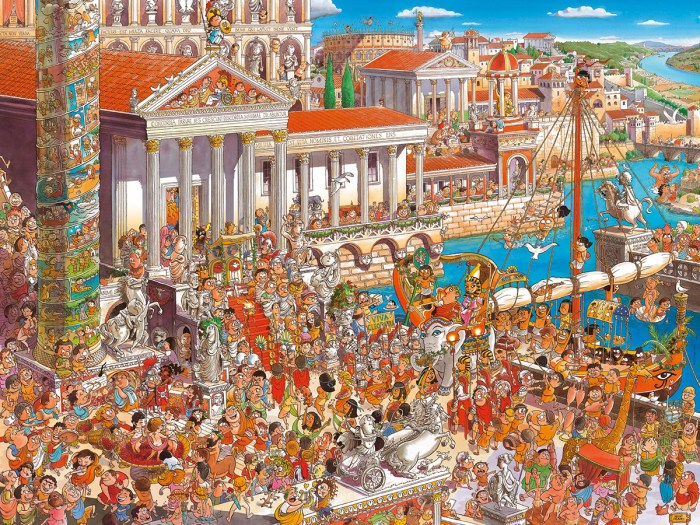
The ancient Romans were a deeply religious people, with a complex system of beliefs and practices. They believed in a pantheon of gods and goddesses, each of whom had a specific domain of influence. The most important gods were Jupiter, the king of the gods; Juno, his wife and the queen of the gods; Mars, the god of war; and Minerva, the goddess of wisdom.The
Romans also believed in a number of spirits and deities, such as the Lares, who protected the home, and the Penates, who protected the family. They believed that these spirits could be appeased with offerings and prayers.
Religious Practices
The Romans practiced their religion through a variety of rituals and ceremonies. These included sacrifices, prayers, and festivals. Sacrifices were the most important form of religious practice, and they were used to honor the gods and goddesses and to ask for their favor.
Prayers were also an important way to communicate with the gods, and they were often used to ask for help or guidance. Festivals were held throughout the year to celebrate the different gods and goddesses and to mark important events in the Roman calendar.
Role of Religion in Daily Life, Life in ancient rome
Religion played an important role in the daily life of the ancient Romans. It influenced their morals, their laws, and their politics. The Romans believed that the gods controlled all aspects of life, and they sought to please the gods in order to gain their favor.
Religion also provided a sense of community and belonging, and it helped to reinforce the social hierarchy.
Entertainment
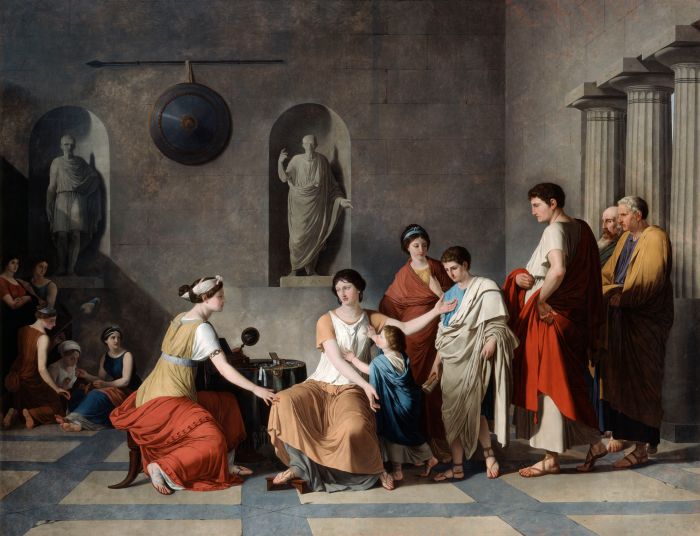
The ancient Romans were a pleasure-loving people, and entertainment played a significant role in their society. From grand spectacles in the Colosseum to more intimate gatherings at home, the Romans enjoyed a wide variety of entertainment options.
Entertainment served several purposes in Roman society. It provided a much-needed escape from the stresses of daily life, fostered a sense of community, and celebrated important events and victories. Additionally, entertainment played a role in religious rituals and political propaganda.
Gladiatorial Contests
Gladiatorial contests were one of the most popular forms of entertainment in ancient Rome. These bloody spectacles featured trained fighters battling each other to the death in front of cheering crowds. Gladiators were often slaves, criminals, or prisoners of war, and their fights were seen as a way to display Roman power and brutality.
Chariot Races
Chariot races were another popular form of entertainment. These races were held in large, purpose-built stadiums called circuses. Teams of four horses pulling a chariot would race around the track, often crashing into each other and causing injuries or even death.
Chariot races were a major gambling event, and spectators would bet heavily on their favorite teams.
Theater
The Romans also enjoyed theater. They built large, open-air theaters where they would watch comedies, tragedies, and farces. Roman theater was often satirical and political, and it provided a way for the Romans to express their opinions on current events and criticize their leaders.
Music and Dance
Music and dance were also popular forms of entertainment in ancient Rome. The Romans enjoyed a variety of musical instruments, including the lyre, flute, and drums. They also enjoyed dancing, and there were many professional dancers who performed at parties and other events.
Politics
The political system of ancient Rome was a complex and evolving one, characterized by a mix of monarchy, aristocracy, and democracy. The most important political figure in the early Republic was the consul, who was elected annually by the people and served as the chief magistrate.
The consul was responsible for leading the army, administering justice, and carrying out the laws.
The Senate
The Senate was a body of elder statesmen who advised the consuls and played a major role in shaping policy. The Senate was made up of former consuls and other high-ranking officials, and its members were appointed for life. The Senate was a powerful institution, and its decisions were often binding on the consuls.
The Assemblies
The people of Rome had a direct voice in government through the assemblies. There were three main assemblies: the Centuriate Assembly, the Tribal Assembly, and the Plebeian Assembly. The Centuriate Assembly was the most important, and it was composed of all Roman citizens who were over the age of 17. The Tribal Assembly was made up of all Roman citizens who were over the age of 18, and the Plebeian Assembly was made up of all Roman citizens who were not members of the patrician class.
The assemblies had the power to elect officials, pass laws, and declare war.
The Emperor
In the late Republic, the Roman political system began to break down. The consuls became increasingly powerful, and the Senate became increasingly weak. In 49 BC, Julius Caesar crossed the Rubicon River with his army, and he eventually became the first emperor of Rome.
The emperor was the supreme ruler of Rome, and he had absolute power. The emperor was responsible for appointing officials, making laws, and leading the army.
Economy
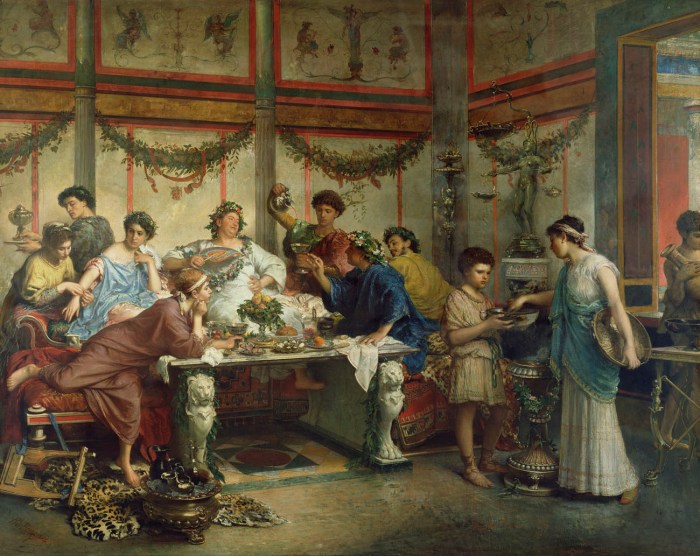
The economy of ancient Rome was largely based on agriculture, trade, and commerce. The Romans developed a complex economic system that included a wide range of industries and trades.
One of the most important industries in ancient Rome was agriculture. The Romans were skilled farmers who produced a variety of crops, including wheat, barley, olives, and grapes. They also raised livestock, such as cattle, sheep, and pigs.
Life in ancient Rome was a complex and fascinating tapestry, with its bustling streets, impressive architecture, and vibrant culture. For a respite from the urban hustle, Romans sought refuge in nature’s embrace. Imagine embarking on one of the many hiking trails broken bow offered, immersing yourself in the tranquility of verdant forests and the exhilaration of traversing rugged paths.
After a day spent exploring the wilderness, you could return to the city, carrying with you a renewed appreciation for the harmony between civilization and the natural world.
Trade and Commerce
Trade and commerce were also important to the Roman economy. The Romans traded with a wide range of peoples, including the Greeks, the Egyptians, and the Carthaginians. They exported a variety of goods, including wine, olive oil, and pottery. They also imported a variety of goods, such as spices, silk, and glass.
Art and Architecture: Life In Ancient Rome
Roman art and architecture were greatly influenced by Greek culture, but they also developed their unique characteristics. Roman art is known for its realism, its use of perspective, and its grand scale. Roman architecture is known for its use of arches, vaults, and domes, as well as its monumental structures.
Some of the most famous Roman buildings include the Colosseum, the Pantheon, and the Roman Forum. The Colosseum was a massive amphitheater that could seat up to 80,000 spectators. The Pantheon was a temple that was later converted into a church.
The Roman Forum was the political and commercial center of the Roman Empire.
Roman sculpture is also known for its realism. Some of the most famous Roman sculptures include the Augustus of Prima Porta, the Laocoön and His Sons, and the Dying Gaul. The Augustus of Prima Porta is a portrait of the emperor Augustus.
The Laocoön and His Sons is a sculpture of a Trojan priest and his sons being attacked by snakes. The Dying Gaul is a sculpture of a dying Gallic warrior.
Famous Roman Buildings
- Colosseum
- Pantheon
- Roman Forum
- Arch of Titus
- Trajan’s Column
- Hadrian’s Villa
- Caracalla’s Baths
- Diocletian’s Palace
Famous Roman Sculptures
- Augustus of Prima Porta
- Laocoön and His Sons
- Dying Gaul
- Venus de Milo
- Apollo Belvedere
- Antinous
- Marcus Aurelius
- Constantine the Great
Legacy
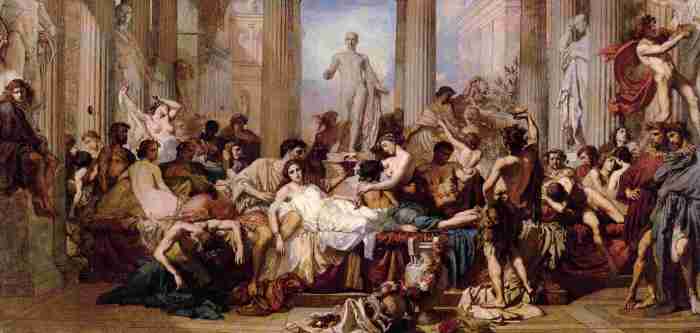
The Roman Empire, which spanned centuries and encompassed vast territories, left an indelible mark on Western civilization. Roman culture, ideas, and institutions continue to shape modern society in countless ways.
One of the most enduring legacies of ancient Rome is its system of law. The Roman legal system, based on the principles of justice, equality, and due process, has served as a model for legal systems around the world. Roman law established the concept of individual rights, the presumption of innocence, and the right to a fair trial.
Language and Literature
The Latin language, the official language of the Roman Empire, has had a profound impact on Western languages. Many modern European languages, such as French, Spanish, Italian, and Portuguese, are derived from Latin. Latin has also been the language of scholarship and the Catholic Church for centuries, and it continues to be studied in universities and seminaries today.
Roman literature, including the works of Virgil, Cicero, and Ovid, has inspired and influenced writers throughout history. Roman poets, playwrights, and historians explored themes of love, war, politics, and human nature that continue to resonate with readers today.
Architecture and Engineering
The Romans were renowned for their architectural and engineering achievements. They built aqueducts, roads, bridges, and amphitheaters that were marvels of engineering. Roman architecture, characterized by its use of arches, domes, and concrete, has influenced architectural styles throughout history.
The Roman Empire also left a lasting legacy in the realm of politics and government. The Roman system of government, with its division of powers between the senate, consuls, and assemblies, has served as a model for many modern democracies.
Roman political ideas, such as the concept of citizenship and the rule of law, continue to shape political thought and practice today.
Art and Culture
Roman art, influenced by Greek and Etruscan traditions, flourished during the empire. Roman artists produced sculptures, paintings, and mosaics that depicted historical events, mythological scenes, and everyday life. Roman art has had a significant impact on Western art, inspiring artists from the Renaissance to the present day.
The Roman Empire also left a lasting legacy in the realm of religion. The Romans adopted and adapted many gods and goddesses from other cultures, and they developed their own unique religious practices. The Roman Empire was also the birthplace of Christianity, which would eventually become one of the world’s largest religions.
Conclusion
The legacy of ancient Rome is vast and multifaceted. Roman culture, ideas, and institutions have shaped Western civilization in countless ways. From the legal system to the languages we speak, from the architecture we admire to the political systems we govern ourselves by, the legacy of ancient Rome continues to live on today.
Epilogue
In the twilight of its existence, ancient Rome bequeathed to posterity a treasure trove of cultural, political, and architectural marvels that continue to inspire and captivate us today. Its legacy extends far beyond the confines of its physical remains, permeating the fabric of modern civilization and shaping the course of human history.
As we bid farewell to this extraordinary epoch, let us remember the lessons it imparts about the indomitable spirit of humanity, the resilience of civilization, and the enduring power of the human imagination.
